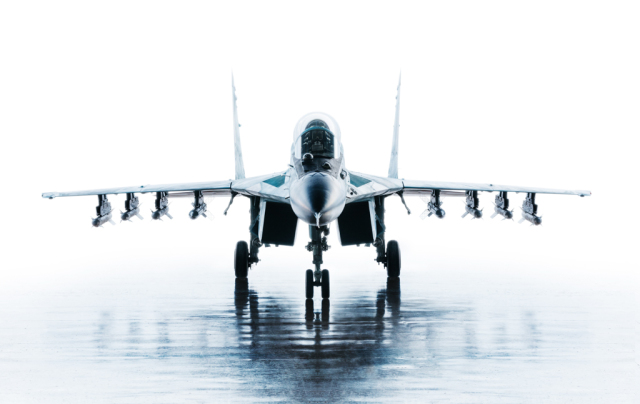December 8 marks the 83rd anniversary of the establishment of the A.I. Mikoyan Experimental Design Bureau. Currently, the Mikoyan Design Bureau is part of the United Aircraft Corporation. Artem Ivanovich Mikoyan, Mikhail Iosifovich Gurevich and their followers created outstanding aircraft known far beyond the borders of our country. Here appeared the first jet and the first supersonic fighters of the Soviet Union, record-breaking aircraft. Of the more than 450 aircraft and cruise missile projects developed in the design bureau, 94 have reached the stage of mass production. About the most striking developments of the Design Bureau – in our material.MiG-15: Soldier aircraft
The first jet fighters appeared in Germany, the USA and the UK during the Second World War, and after 1945 an international race began to create the best designs of jet aircraft. The Soviet Union was not inferior in this engineering competition: on April 24, 1946, MiG-9 and Yak-15 fighters took to the sky almost simultaneously, which opened the era of jet aviation in the USSR. However, a real breakthrough in the jet theme took place thanks to the creation of the MiG-15 fighter in the Design Bureau of A.I. Mikoyan and M.I. Gurevich, which on December 30, 2022 will celebrate its 75th anniversary from the day of the first departure.
Jet engines made it possible to reach previously unprecedented speeds (about 1000 km / h), but this also required new design solutions. One of those was the swept wing. Another response to high speeds and increased danger to the pilot was the introduction of a pressurized cabin and an ejection seat. The RD-45F turbojet engine, created under the leadership of V.Y. Klimov, was chosen as the MiG-15 powerplant.
The baptism of fire of the MiG-15 took place during the Korean War in 1950-1953, where it showed its best side. Due to the exceptional simplicity of design, manufacturability, reliability in operation and survivability, as well as outstanding flight-technical and combat qualities, the MiG-15 gained fame as a "soldier aircraft". In many respects, he surpassed the best fighters of his time, and made up an entire era of subsonic jet aviation. It was the MiG-15 that brought world fame and recognition to the Design Bureau of A.I. Mikoyan and M.I. Gurevich.
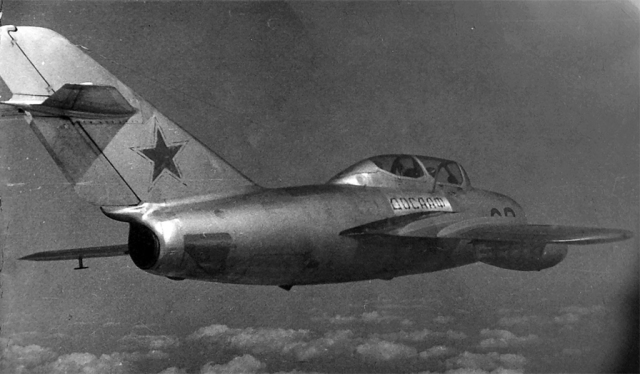
The MiG-15 is a record holder in terms of mass production. In various modifications, it was produced in 1949-1959 at nine domestic aircraft factories, which in total built almost 13 thousand aircraft. Licensed production was established in Poland and Czechoslovakia. The total output exceeded 17 thousand cars. No jet aircraft in the world has ever been mass-produced in such quantities! The MiG-15 in various modifications was in service with the Air Forces of more than 40 countries. In some countries, it was in service until the 2000s.
MiG-19: overtaking the sound
This aircraft is the first domestic serial supersonic fighter. During the development of the MiG-19, in close cooperation with TsAGI, related research institutes and Design Bureau, a number of new scientific and technical issues were solved, including the development of a supersonic aerodynamic layout with a 55° sweep wing, the introduction of an irreversible booster control system and a cockpit air conditioning system.
A controlled stabilizer was installed on the MiG-19S fighter to improve the maneuverability and controllability of the aircraft at supersonic speeds and high altitudes.
To solve the tasks of air defense, MiG-19P interceptor fighters with cannon armament and MiG-19PM with missile were mass-produced. The appearance of a significant number of supersonic interceptors equipped with airborne radars and various types of weapons has significantly increased the combat capabilities of air defense aircraft.
In 1955-1960, a total of 1,892 MiG-19 aircraft in various modifications were built at two domestic aircraft factories, and taking into account licensed production in China and Czechoslovakia, the total output was about 6,300 copies. The MiG-19 family of aircraft were in service with more than 25 countries around the world.
MiG-21: triangular wing
The first domestic serial fighter with a triangular wing. The high technical and technological level has put the MiG-21 among the most famous front-line fighters in the world. For the first time in the practice of the Design Bureau, a triangular wing with a large sweep along the leading edge was used on an airplane (57).
The solutions successfully found during the creation of the MiG-21 made it possible to create more than 20 modifications based on it, 16 of which were in mass production. The MiG-21 became the most massive supersonic aircraft in the history of aviation. Only in the USSR it was mass-produced at three aircraft factories for 30 years. Taking into account licensed production in India, China and Czechoslovakia, more than 13,800 aircraft were manufactured. In China, serial production ended in March 2017. The aircraft was in service with 49 countries of the world. In the air Forces of some states, it is still being operated today.
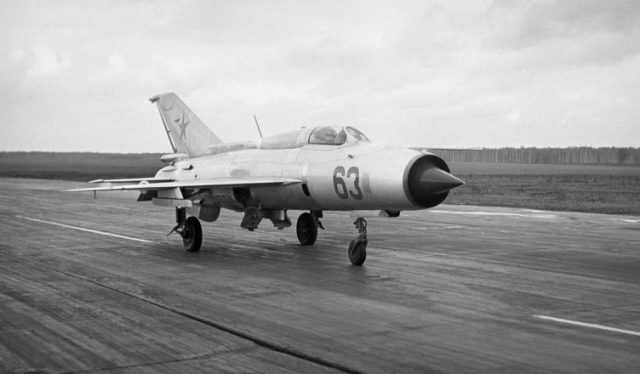
24 world aviation records were set on MiG-21 aircraft, including three absolute ones. Currently, four records set in 1991 are valid.
The creation and development of the MiG-21 family of aircraft confirmed the correctness of the concept of mass-produced light fighters with high combat characteristics and low cost developed in the Design Bureau. This concept has received worldwide recognition and has been successfully implemented in the domestic and foreign aircraft industry.
MiG-23: multi-mode flight
This aircraft with a variable sweep of the wing for many years became the hallmark not only of the Design Bureau of General Designer A.I. Mikoyan, but also of the USSR Air Force. The use of a variable geometry wing improved the take-off and landing characteristics of a supersonic aircraft. The wing position of 16 degrees was used for takeoff and landing, as well as during flights at maximum range, the position of 45 degrees – for maneuvers at subsonic and transonic speeds, the position of 72 degrees – for flight at supersonic speed. At high altitudes, the fighter could accelerate up to 2500 km/h.
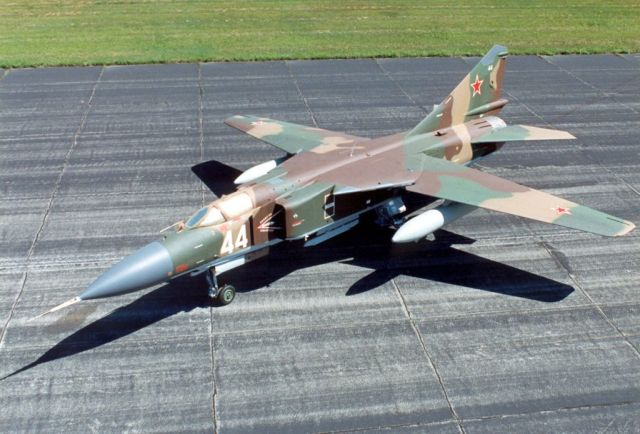
The MiG-23 was the most massive domestic fighter of the third generation and the main fighter of the USSR Air Force in the 1970s and 1980s. The machine was exported and was in service with more than 20 states. A total of 4,640 MiG-23 fighters were produced in various modifications. The tested wing scheme was later successfully applied on MiG-27, Su-24 fighter-bombers and Tu-22M and Tu-160 strategic missile carriers.
MiG-25: overcoming the thermal barrier
On this aircraft, the most difficult task was successfully solved – overcoming the thermal barrier. When flying with the number M = 2.83, the heating temperature reaches 300 ° C or more, which requires the exclusion of many elements of traditional aviation duralumin alloys from the design and the use of new heat-resistant materials. Stainless steel was used as the main structural material for the MiG-25 (the mass of parts made of it was up to 80% of the total mass), and automatic welding was used for installation. Titanium alloys (about 8% of the total mass of the structure) and heat-resistant duralumin alloys (about 11% of the total mass of the structure, for non-power parts) were also used in the design.
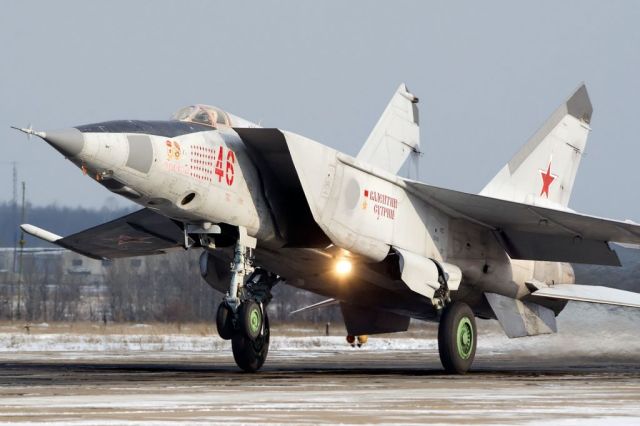
MiG-25RB. Photo: Alex Beltyukov / wikimedia.org
The MiG-25 became the first Soviet production aircraft with a maximum flight speed of 3000 km/h. It was produced in variants of an interceptor fighter and a reconnaissance aircraft. For quite a long time, MiG-25P and MiG-25PD interceptor fighters formed the basis of air defense fighter aircraft. In the areas covered by these aircraft, flights of high-altitude American reconnaissance aircraft U-2 and SR-71 stopped. The MiG-25RB reconnaissance aircraft was able not only to conduct aerial reconnaissance, but also to carry out bombing attacks from high altitudes.
The MiG-25 is the OKB's record holder for the number of established aviation world records, which include the absolute altitude record of 37650 m. Due to the unique speed and altitude characteristics, a total of 39 world aviation speed, altitude and climb time records were set on the MiG-25 experimental aircraft, including 3 absolute ones.
MiG-29: fourth generation to take off
This highly maneuverable, reliable and well-armed fighter first took to the skies in 1977. The MiG-29 took over the baton of the main light front-line fighter of the USSR Air Force from the MiG-21 and MiG-23.
A number of breakthrough design solutions and technologies were introduced on the MiG-29. The integral aerodynamic layout, in which a significant part of the lift is created by the fuselage, has become a distinctive feature of the aircraft. This arrangement, combined with the high thrust-to-weight ratio created by two powerful RD-33 engines, provides not only flight at high angles of attack, but also the performance of such aerobatics as the "bell", previously inaccessible to jet fighters. Sharply increased maneuverability, characteristics of the sighting system and avionics, combined with the equipment of new guided missiles, ensured the defeat of air targets maneuvering with an overload of up to 12 units, the limit for maneuverable aircraft according to the physiology of the pilot and strength standards.
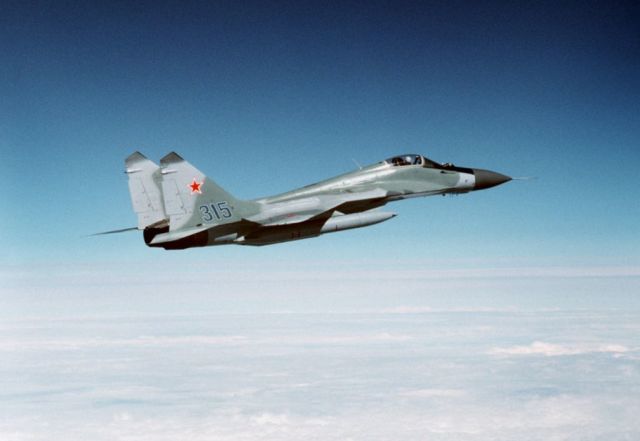
Photo: wikipedia.org
For the first time in world practice, a quantum optical-location station was used on the MiG-29 to detect and measure the coordinates of air targets in close-range highly maneuverable combat. In addition, for the first time in fighter aviation, a helmet-mounted system is installed on the aircraft, which provides target designation in a wide area of bearing angles by simply turning the pilot's head and applying the crosshair of the helmet sight to the target, which does not require vigorous maneuvering of the aircraft.
Today, 45 years after the first departure, MiG-29 fighters in various modifications continue to serve in the Aerospace Forces and aviation of the Russian Navy.
MiG-31: interceptor for air defense
The MiG-31 long-range interceptor fighter was created to replace the MiG-25PD in air defense aviation. Its tasks include the interception of air targets of any type in the entire range of heights and flight speeds available for aerodynamic aircraft, including cruise missiles of the ALCM or Tomahawk type, performing low-altitude flight in the terrain envelope mode.
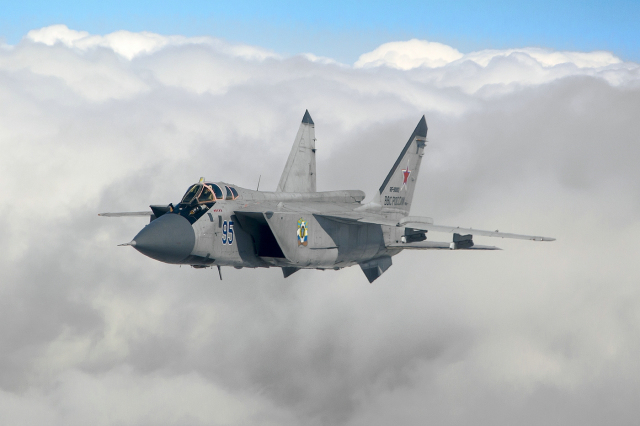
Photo: Konstantin Turpeko / wikimedia.orgThe aircraft can reach speeds of up to 3000 km / h and climb to an altitude of up to 21 km.
For a more successful performance of the assigned tasks, a place for the navigator-operator appeared in the cockpit. The MiG-31 became the world's first mass-produced fighter equipped with an interception complex, which includes an onboard radar station with a phased array antenna.
Today, the modernization of fighters is being carried out Due to the installation of new avionics and weapons, the efficiency of the MiG-31BM has increased 2.6 times compared to the MiG-31.
MiG-35: 4++ fighter
Migovtsy chose the successful aerodynamic layout of the MiG-29 as the basis for the new generation 4++ fighter. The MiG-35 multifunctional aviation complex was developed taking into account the combat use of the MiG-29 and its operation in various climatic conditions. Among its tasks is to gain air supremacy and deliver effective strikes with precision weapons at targets from outside the enemy's air defense zone.
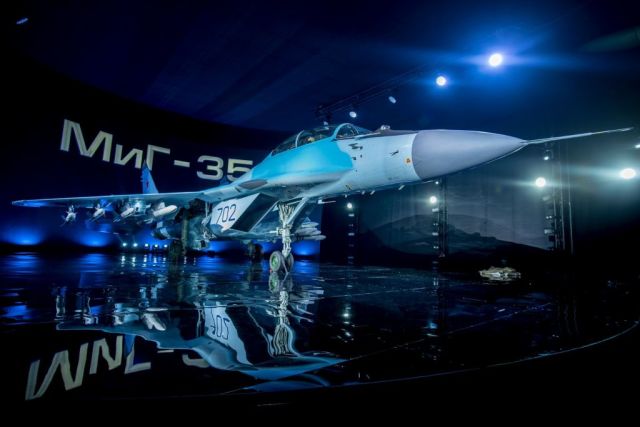
The distinctive features of the new aircraft, which made its first flight in 2016, are a low level of radar visibility, an open architecture of avionics, an extended service life and a low cost of flight hours. According to its indicators, the MiG-35 is as close as possible to the fifth generation of fighters. The aircraft can be made in both single and double versions.
